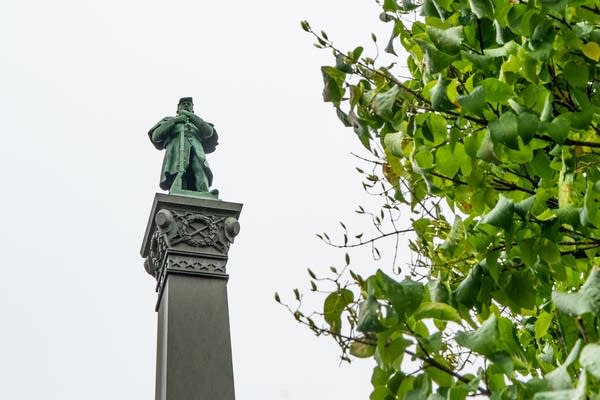Massacre clouds story of the soldier on Minnesota's pedestal

A statue of Josias King stands below the Cathedral of St. Paul in St. Paul, Minn. on Wednesday, Sept. 19.
Evan Frost | MPR News
Go Deeper.
Create an account or log in to save stories.
Like this?
Thanks for liking this story! We have added it to a list of your favorite stories.


